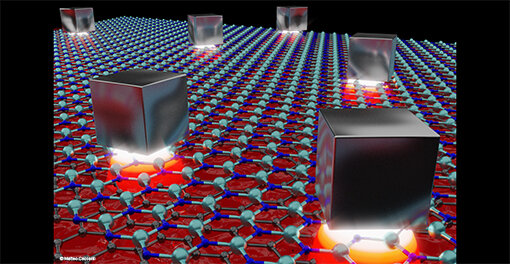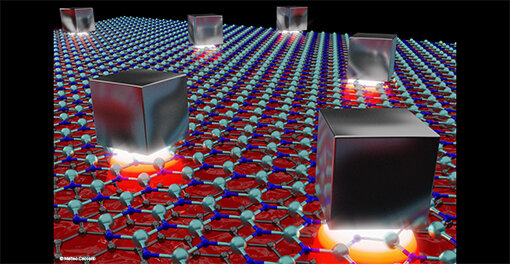
Smallest cavity for light realized by graphene plasmons
June 16, 2020
What is the smallest volume one can confine electromagnetic radiation?
The typical answer is “in a spatial region of the order of the wavelength of the radiation in free space”. However, this answer has shown to be wrong due to plasmonics effects in metals and graphene. These effects arise from the coupling of electromagnetic radiation to free carriers in a conductor. It is known that in the visible and near-IR noble-metal plasmonic nanostructures and metallic gratings can couple light well below the diffraction limit. However, these same materials are poor plasmonics performers in the mid-IR and the THz. During the last ten years, graphene has emerged as an excellent plasmonic material in the mid-IR and the THz, outperforming noble-metal plasmonic nanostructures. Writing in Science magazine, a team of researchers from ICFO, MIT, Duke University, University of Paris-Saclay, University of Minho, and INL, in an experimental-theory effort, has achieved unprecedented electromagnetic confinement with a system composed with graphene and silver nanocubes dispersed on graphene. The nanocubes give rise to nanoresonators, Fabry-Perrot cavities, confining mid-IR radiation several orders of magnitude below the diffraction limit. The confinement is achieved both vertically and laterally. The obvious application of this new system is sensing of minute quantities of analyte exploring their vibrational resonances. A less obvious application is the building of metamaterials working in the mid-IR where these are urgently needed.
Link for the original article.


